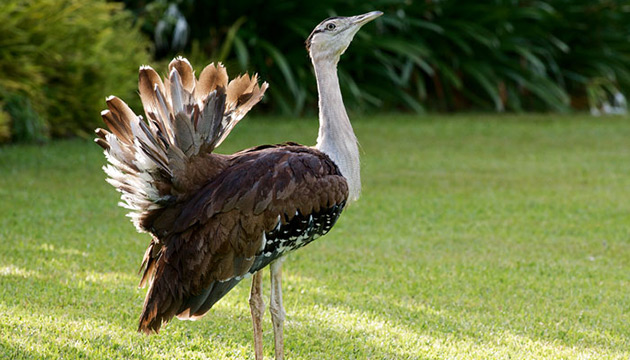Once widespread across our open plains, Australia’s heaviest flying bird – the bustard – has been pushed to extinction in many parts of the country.
Story By David Hancock
The bustard was once common across Australia. In his log of May 23, 1770, Captain James Cook mentions shooting a bird for the table and naming a bay in northern Queensland after it. Scientist Joseph Banks referred to the culinary delight of the shot bird: “…. it turned out to be an excellent bird … far the best we all agreed that we have eat[en] since we left England, and as it weighed 15 pounds our Dinner was not only good but plentyfull.”
Such has been the fate of the Australian bustard (and other species of bustards around the world). As large, inquisitive birds that gathered in numbers, they fell easy prey to settlers who appreciated a good meal (the heaviest recorded bustard, from Victoria, weighed in at 14.5 kilograms). Their habit of laying a single egg on the ground also made them vulnerable to land clearing and introduced animals such as foxes, cats and dogs.
For years, scientists around Australia have been trying to establish captive-breeding programs for the bustard so this iconic bird can eventually be reintroduced to the wild. Top End conservationist Peter McGrath has succeeded where others have struggled with this notoriously difficult to breed creature.
This Story is from Issue #101
Outback Magazine: June/July 2015










